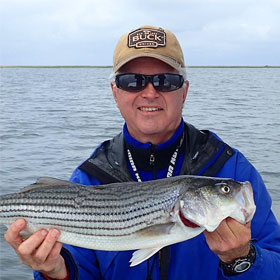10 Tips for Enjoying Cold-Water Boating in Winter
By Ken Schultz
Feb 03, 2021
Due to potential exposure, cold-water boating in winter entails more risk than warm-water boating, but this can be minimized by following this practical advice
While most boats are laid up over winter, there’s still plenty of boating in winter to enjoy: in warmer climates for the purpose of fishing or simply cruising, on cold rivers where winter steelhead exist, in coastal waters for migrating species, and so forth.
Whether you’re boating in winter from an open boat, a boat with a cabin, or simply a kayak, you have to respect the elements and be aware of the effects of exposure to cold air and water, even on a warm and windless day. While you should always have all of the normal safety equipment when you go boating, here are ten tips specific to enjoying cold-water boating in winter.
1. Consider Survival Wear
Wearing appropriate clothing and footwear is obviously important for winter boating. However, a float coat or survival suit is a good investment if you’ll be venturing out often.
2. Have Two Pairs of Warm Gloves
If you’re fishing, one pair will likely get wet. Save the second pair for the ride home.
3. Use Hand and Toe Warmers
Put hand warmers in your gloves or at least in your jacket pockets. Use toe warmers in your boots, or maybe electric socks or boot-warming insoles.
4. Cover Your Face and Eyes
Use ski goggles to cover your eyes when the boat is running fast, especially if you’re the operator. A warm balaclava should cover all exposed facial flesh. Remember that wind chill is considerable the faster the boat is moving.
5. Face the Stern; Go Low
If you’re a passenger, put your back to the bow and face the stern when the boat is running. Get low if possible; some passengers sit on a bean bag on the floor.
6. Keep Your PFD On
The shock of sudden entry into cold water dictates cold weather boating prudence. If something goes drastically wrong, you have a better chance of survival in cold water if your PFD is already on, secure, and properly fitted.
7. Make Sure Your Boat/Motor Is in Top Shape
This is not the time for a crippling breakdown that strands you, especially when there are fewer people on the water to come to your assistance. Don’t go out unless you have 100% confidence in your vessel.
8. And Get It Registered
This is also not the time to discover that you forgot to register your boat, which sometimes happens in winter and at the start of a new season. Best to get it done beforehand.
9. Have Company
Take a capable companion (or paddle with another person if you’re kayaking) along who can lend a hand if you get into trouble. Whether solo or with someone, let someone else know where you’re headed and when you expect to be back, and when to raise an alarm if you haven’t contacted them.
10. Don’t Take Chances
Through your actions, could you possibly run aground, or hit an underwater obstruction and disable your motor, or get stuck behind an ice floe (this happened to me once)? In each case, you could be in for a long and cold time until you can get out of the predicament. Be realistic about your abilities and the circumstances, especially considering the coldness of the weather and the water. Consider how you’d have to deal with an incident that you might otherwise avoid by making a good decision rather than a risky one.









